All Filter
Selected filters:
Case study
Showing 35 of 111 tools
unset filterCase study SEEK (Sludge to Energy Enterprises in Kampala): co-processing faecal sludge for fuel production
The SEEK (Sludge to Energy Enterprises) Project, implemented in Kampala, Uganda, explores faecal sludge (FS) as a resource for solid fuel production and electricity generation. With financial constraints limiting effective faecal sludge management (FSM), resource recovery from FS treatment end products offers a potential revenue stream to offset treatment costs. Through pelletising and gasification, FS can serve as an industrial fuel, contributing to sustainable waste management, energy security, and environmental protection. The project worked to optimize FS drying, reduce ash content, and develop business models for large-scale adoption.

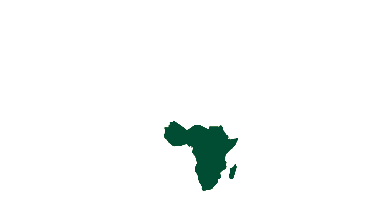
Recovering of
Electricity Solid fuel
Waste Streams
Faecal sludge Food processing by-products
Year | Organization
2015 | EAWAG
Learn more
The case study was extrated from the publication linked below: Gold, M., Niwagaba, C., Studer, F., Getkate, W., Babu, M., & Strande, L. (2015). Swiss Federal Institute of Aquatic Science and Technology—Eawag. Sandec News, 16, 10–11.
More information about the SEEK - Sludge to Energy Enterprises in Kampala project, including more publications, is available free of acces or upon request in EAWAG's website at the link below:
https://www.eawag.ch/en/department/sandec/projects/ewm/seek-sludge-to-energy-enterprises-in-kampala/
Mosan, an international social enterprise, offers a circular, off-grid, and waterless sanitation solution targeting low-income communities in developing countries. Their innovative system consists of the Mosan Toilet, waste collection and transport services, and the transformation of human excreta into biochar and struvite, valuable agricultural products. Active since 2010 and currently operational in Guatemala, Mosan's solutions address the sanitation crisis by integrating ecological sustainability with community engagement.


Recovering of
Biochar Nutrients Struvite
Waste Streams
Faecal sludge Urine
Year | Organization
2024 | Mosan
The SWITCH Africa Green-supported project aimed to develop an alternative energy source for micro, small, and medium enterprises (MSMEs) in Burkina Faso by utilizing cashew nut waste. The initiative, implemented in Bobo-Dioulasso and Ouagadougou, focused on producing fuel briquettes from cashew nut shells as a sustainable replacement for firewood and charcoal. This helped combat deforestation, improve energy access, and support green business practices. The project also trained MSMEs on waste-to-energy conversion and fostered networks among green businesses, further advancing sustainable consumption and production.


Recovering of
Solid fuel
Waste Streams
Food processing by-products
Year | Organization
2024 | Fondation 2iE
Learn more
The case study was extracted from the publication linked below: United Nations Environment Programme, United Nations Development Programme, & United Nations Office for Project Services. (2021). Recovery of waste from the Cashew Nut Sector as a Renewable Energy Source for MSMEs in Burkina—SWITCH Africa Green.
Safisana aims to improve health, hygiene, and environmental sustainability in low-income urban areas by addressing sanitation, waste management, energy, and food security challenges. The organization builds and operates circular recycling plants that transform faecal and organic waste from communities and industries into renewable energy and organic fertilizer. Since 2017, Safisana’s first waste-to-resource plant in Ashaiman, Ghana, has served over 80,000 people by providing a cleaner environment, green electricity, and high-quality organic fertilizer. The model has been successfully replicated in Kumasi, Ghana’s second-largest city, with further expansion plans underway.


Recovering of
Biogas
Waste Streams
Faecal sludge Organic solid waste
Year | Organization
2024 | SafiSana
This case study focuses on the strategies employed to recover resources from Amsterdam’s wastewater. The research project involves Waternet, the municipal water authority, along with Delft University of Technology. The study highlights the use of dynamic adaptive policy pathways to identify and implement resource recovery strategies in complex and uncertain systems. The main products recovered include alginic acid, bioplastic, cellulose, phosphorus, and biogas. These strategies contribute to Amsterdam’s transition towards a circular economy. This case study provides a model for other cities aiming to implement similar sustainable solutions.

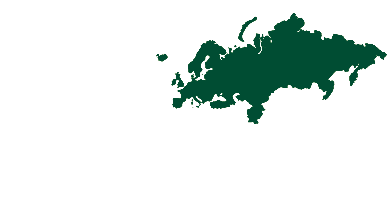
Recovering of
Alginic acid Biogas Bioplastics Cellulose Struvite
Waste Streams
Wastewater
Year | Organization
2016 | Delft University of Technology
Learn more
This case study was extracted from the journal article: van der Hoek, J. P., de Fooij, H., & Struker, A. (2016). Wastewater as a resource: Strategies to recover resources from Amsterdam’s wastewater. Resources, Conservation and Recycling, 113, 53–64.
Case study Reuse of treated wastewater in Jordan
Three case studies examine best practices for treated wastewater (TWW) reuse in Jordan, a country challenged by extreme water scarcity issues. Two cases are from centralized wastewater treatment plants (WWTP) of Wadi Musa (2004) and Aqaba (2002) implemented with support from USAID and local stakeholders. The third case is from a decentralized WWTP for the Public Security Directorate (PSD) compound in the peri urban area of Moqablane, Amman. These projects have demonstrated significant socio-economic and environmental benefits. The initiatives began with infrastructure development and capacity-building efforts and have resulted in increased resource recovery, reduced freshwater demand, and enhanced agricultural productivity.

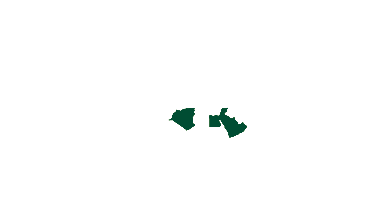
Recovering of
Waste Streams
Wastewater
Year | Organization
2024 | Camp Dresser and Mckee (CDM), Aqaba Water Company (AWC), Public Security Directorate (PSD)
Learn more
Nationwide evaluation report on reuse of treated wastewater in Jordan. Chapter 4 summarizes the case studies.
Reuse of treated wastewater in Jordan
Wadi Musa wastewater treatment plant and the Sadd al Ahmar alfalfa irrigation area
Brief of lessons learned and policy recommendations
Promoting decentralized wastewater treatment and reuse in peri-urban Jordan
This case study highlights resource recovery from wastewater and organic waste in the Philippines. Key stakeholders, including local governments, private sector partners, and international organizations like PEMSEA and ARCOWA, support wastewater treatment, water reuse, and bio-energy production. The report summarizes efforts to reuse treated wastewater, recover bioenergy, and extract nutrients from wastewater, pig farms, and industries. Active for years, the initiative has improved sanitation, reduced pollution, and enhanced resource recovery. By integrating circular economy principles, it serves as a model for sustainable wastewater management in urban areas facing similar challenges.

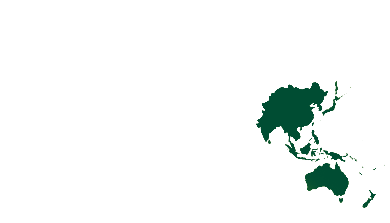
Recovering of
Waste Streams
Year | Organization
2018 | ARCOWA
Case study Nutrient, energy and materials recovery from Guijuelo wastewater treatment plant in Spain
The Guijuelo wastewater treatment plant (WWTP) Biofactory in Salamanca, Spain, is a pioneering initiative in circular bioeconomy that converts wastewater and agri-food industry by-products into valuable resources. Managed by Aqualia, this biofactory integrates anaerobic co-digestion, biomethanisation, and biofuel production to generate biofertilizers, bioplastics, and biomethane (bio-CNG). The project optimizes WWTP operations, reduces the ecological footprint of the agri-food sector, and serves as an economic engine for the region. With innovations such as thermal hydrolysis, electrostimulated anaerobic bioreactors (ELSAR®), and ABAD Bioenergy®, the plant exemplifies sustainable resource recovery in wastewater treatment.


Recovering of
Biogas Energy Fertilizer Materials Water
Waste Streams
Food processing by-products Wastewater Wastewater sludge
Year | Organization
2021 | Aqualia
Learn more
The case study was extracted from the publication linked below: Aqualia (2021). From waste to resource: from WWTP to biofactory.
https://www.globalwaterintel.com/articles/from-waste-to-resource-from-wwtp-to-biofactory-aqualia
Video of Guijuelo Biofactory
The Kaikōura District Council faced a challenge in managing approximately 1,500 tonnes of biosolids that had been left to weather under a 10-year resource consent. With the consent expiring in 2016, the council engaged the community to explore and develop acceptable reuse solutions. The Centre for Integrated Biowaste Research (CIBR) led a collaborative study that integrated biophysical, economic, and social science research. The participatory process helped develop biosolids management strategies that balanced environmental, economic, and cultural considerations. The key outcomes included community-supported biosolids reuse options such as exotic forest application, rehabilitation with native plants, and composting (open-air and vermicomposting).


Recovering of
Compost Fertilizer Soil conditioner
Waste Streams
Biosolids
Year | Organization
2013 | Centre for Integrated Biowaste Research
Learn more
The case study was extracted from the publication linked below: Langer L., Ataria J., Leckie A., BakerV.,Horswell J., Yao R., McDevitt J., Goven J., Solomon R., Tremblay L., Northcott G., Xue J., Ross C. and Robinson B. (2013). Kaikōura case study: community engagement to determine biosolids reuse. Centre for Integrated Biowaste Research
This case study highlights the decentralized wastewater treatment and reuse projects implemented in Cochabamba, Bolivia, by Fundación Aguatuya since 2014, in partnership with local municipalities and international cooperation agencies. The initiative aims to improve wastewater management and promote resource recovery through a circular economy approach. The project has established decentralized municipal treatment plants that ensure that treated effluent is reused for agricultural irrigation. This initiative addresses water scarcity, supports sustainable urban and peri-urban sanitation, and contributes to local agricultural productivity.


Recovering of
Water
Waste Streams
Wastewater
Year | Organization
2024 | Fundación Aguatuya
Learn more
The case study was extracted from the publication in Spanish linked below: Heredia, G., Gandarillas, V., Becerra, A. (2020). Estudios de caso en saneamiento sostenible. Tratamiento descentralizado de aguas residuales con enfoque de reúso en Cochabamba, Bolivia. SuSanA Latinoamerica
https://www.susana.org/knowledge-hub/resources?id=3983
Details about the case study of Cliza municipality are available free of access in Spanish in the link below
https://aguatuya.org/docs/1733407029208-918368489.pdf
Details about the case study of Tolata municipality are available free of access in Spanish in the link below
https://aguatuya.org/docs/1733406984228-837394897.pdf
Details about the case study of Punata municipality are available free of access in Spanish in the link below
AgriProtein was the world’s first industrial-scale producer of Black Soldier Fly (BSF)-based feed and the largest BSF company globally. Based in South Africa and subsequently in the UK, the company pioneered BSF technology to process organic waste and create valuable products such as larvae meal, biofertilizers, and oil. AgriProtein demonstrated the viability of BSF technology for waste diversion, resource recovery, and sustainable feed production.


Recovering of
Soil conditioner Black soldier fly larvae
Waste Streams
Organic solid waste Faecal sludge
Year | Organization
2024 | AgriProtein Technologies
Learn more
This case study is extracted from the publication linked below: "Global Experiences on Waste Processing with Black Soldier Fly (Hermetia illucens): From Technology to Business, Joly, G., Nikiema, J. (2019)"
Enterra Feed Corporation pioneered industrial-scale Black Soldier Fly (BSF) technology to convert preconsumer organic waste into sustainable products such as larvae meal, oil, and biofertilizers. The company operated facilities in Canada and aimed to address organic waste management challenges while providing eco-friendly agricultural inputs. Despite its innovative approach and significant contributions to waste diversion and sustainable feed production, Enterra Feed entered receivership in November 2022 due to financial challenges, halting its independent operations.


Recovering of
Black soldier fly larvae Fertilizer Nutrients
Waste Streams
Organic solid waste
Year | Organization
2022 | Enterra Feed Corporation
Learn more
This case study is extracted from the publication linked below: "Global Experiences on Waste Processing with Black Soldier Fly (Hermetia illucens): From Technology to Business, Joly, G., Nikiema, J. (2019)"
Ento-Prise is a research initiative under the EU-funded PROteINSECT project, aimed at developing a commercial Black Soldier Fly (BSF) bioconversion system for organic waste in Ghana. By establishing pilot and demonstration facilities, the project focused on transforming fruit and vegetable waste into valuable resources like animal feed and compost. The initiative supported smallholder farmers by creating locally produced, cost-effective farming inputs while addressing waste management challenges.


Recovering of
Black soldier fly larvae Compost Fertilizer Nutrients
Waste Streams
Organic solid waste
Year | Organization
2016 | Food and Environment Research Agency (FERA)
Learn more
This case study is extracted from the publication linked below: "Global Experiences on Waste Processing with Black Soldier Fly (Hermetia illucens): From Technology to Business, Joly, G., Nikiema, J. (2019)"
The From Organic Waste to Recycling for Development (FORWARD) project is a research and development initiative implemented in Indonesia. It focuses on valorizing municipal organic waste through Black Soldier Fly (BSF) larvae-based waste treatment technology. The project aims to transform market waste into valuable products like animal feed, compost, and starter kits. Funded initially by SECO, the project is now a proof-of-concept operation, integrating BSF technology for sustainable organic waste management in Sidoarjo, East Java.


Recovering of
Black soldier fly larvae Compost Nutrients
Waste Streams
Organic solid waste
Year | Organization
2024 | Swiss Federal Institute of Aquatic Science and Technology (Eawag)
Learn more
This case study is extracted from the publication linked below: "Global Experiences on Waste Processing with Black Soldier Fly (Hermetia illucens): From Technology to Business, Joly, G., Nikiema, J. (2019)"
In the Negev desert, a novel wastewater treatment system (WWTS) has been developed and tested for small, off-grid settlements. This modular system integrates advanced technologies such as a recirculating vertical flow bioreactor (RVFB), ozonation, and ultrafiltration. Operating successfully for over two years, the WWTS produces high-quality effluent approved for unlimited irrigation by the Israeli Ministry of Health. It represents a sustainable solution for water reuse in arid environments, addressing water scarcity while meeting regulatory standards.


Recovering of
Water
Waste Streams
Wastewater
Year | Organization
2022 | Zuckerberg Institute for Water Research, Ben-Gurion University of the Negev
Learn more
This case study is extracted from the publication linked below: "Wastewater - Turning Problem to Solution", UNEP (2023)
The text of the case study is available at the link below:
The Fayoum Governorate in Egypt, characterized by extreme water scarcity and a high poverty rate, relies heavily on agricultural drainage water for irrigation. The “SafeAgroMENA” project, funded by the Dutch Ministry of Foreign Affairs, aims to improve the safe reuse of nutrient-rich agricultural drainage water through agroecological interventions. This initiative combines decentralized, on-farm solutions with participatory stakeholder processes, focusing on addressing emerging contaminants, improving water quality, and strengthening food security for small-scale farmers.


Recovering of
Compost Nutrients Water
Waste Streams
Wastewater
Year | Organization
2024 | IHE Delft Institute for Water Education
Learn more
The text of the case study is available at the link below:
https://files.grida.no/sdm_downloads/1146-case-study-3/
This case study is extracted from the publication linked below: "Wastewater - Turning Problem to Solution", UNEP (2023)
Located in Billund, Denmark, the Billund Biorefinery exemplifies circular economy principles in wastewater management. Converted from a conventional wastewater treatment plant in 2017, it now processes household wastewater, organic solid waste, and agricultural waste to produce energy, clean water, and fertilizers. The facility's innovative approach integrates thermal hydrolysis and anaerobic digestion to maximize energy recovery and nutrient recycling. As a net energy exporter and a model for resource recovery, the biorefinery has gained international recognition for its contributions to sustainable development.


Recovering of
Biogas Electricity Energy Fertilizer Heat Nutrients Water
Waste Streams
Faecal sludge Organic solid waste Wastewater
Year | Organization
2024 | Billund Vand & Energi A/S
Learn more
The text of the case study is available at the link below:
https://files.grida.no/sdm_downloads/1146/
This case study is extracted from the publication linked below: "Wastewater - Turning Problem to Solution", UNEP (2023)
More about Billund Biorefinery:
The wastewater treatment plant (WWTP) in Hamburg, Germany, operated by Hamburg Wasser, treats wastewater from 2.5 million people and has transformed from a major energy consumer to a net energy producer. By harnessing biogas from sewage sludge, along with wind and solar power, the plant generates more energy than it consumes. This energy surplus supports public grids and district heating, while also enabling the plant to achieve carbon neutrality in energy supply for freshwater and wastewater services. The initiative exemplifies how wastewater can be a valuable energy source while advancing environmental and economic sustainability.


Recovering of
Biogas Electricity Energy Heat Water
Waste Streams
Wastewater Wastewater sludge
Year | Organization
2024 | Hamburg Wasser; HafenCity University Hamburg
Learn more
The text of the case study is available at the link below:
https://files.grida.no/sdm_downloads/1146-case-study-7/
This case study is extracted from the publication linked below: "Wastewater - Turning Problem to Solution", UNEP (2023)
This case study examines the social barriers to urine recycling within decentralized sanitation systems. Conducted across multiple countries, it highlights perceptions and willingness among farmers, consumers, and other stakeholders to adopt innovations like urine-based fertilizers. Despite significant interest in recycling urine as a nutrient source, cultural and cognitive factors, along with social norms, influence acceptance levels. The study provides insights into the role of stakeholders, including toilet users, farmers, food producers, and decision-makers, in transitioning to circular sanitation systems.

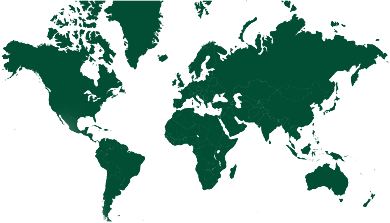
Recovering of
Fertilizer Nutrients Soil conditioner
Waste Streams
Urine
Year | Organization
2024 | Swedish University of Agricultural Sciences (SLU)
Learn more
The text of the case study is available at the link below:
https://files.grida.no/sdm_downloads/1146-case-study-8/
This case study is extracted from the publication linked below: "Wastewater - Turning Problem to Solution", UNEP (2023)
In Burkina Faso, where sanitation access and soil fertility are critical challenges, productive sanitation initiatives have introduced technologies like urine-diverting dry toilets (UDDTs) to safely recover and reuse nutrients from human excreta. Over the past 15 years, more than 13,500 households have participated in 30 projects, improving rural sanitation while enabling the reuse of excreta as fertilizers. These efforts have demonstrated how ecological sanitation can simultaneously address public health, environmental, and agricultural challenges in resource-scarce settings.


Recovering of
Compost Fertilizer Nutrients
Waste Streams
Faecal sludge Urine
Year | Organization
2024 | Stockholm Environment Institute (SEI)
Learn more
The text of the case study is available at the link below:
https://files.grida.no/sdm_downloads/1146-case-study-4/
This case study is extracted from the publication linked below: "Wastewater - Turning Problem to Solution", UNEP (2023)
Original authors' report:
In Ouardanine, Tunisia, the use of treated wastewater for irrigation has been critical due to water scarcity. Farmers’ acceptance of wastewater reuse, primarily driven by economic necessity, has met challenges from low consumer acceptance of crops irrigated this way and inconsistent effluent quality. In response, adaptive strategies, including crop diversification and improved agricultural practices, were introduced. These initiatives enhanced productivity, resilience to water shortages, and economic stability while addressing health and consumer concerns.


Recovering of
Compost Fertilizer Nutrients Water
Waste Streams
Faecal sludge Wastewater
Year | Organization
2022 | National Research Institute of Rural Engineering, Water and Forests, Tunisia
Learn more
The text of the case study is available at the link below:
https://files.grida.no/sdm_downloads/1146-case-study-9/
This case study is extracted from the publication linked below: "Wastewater - Turning Problem to Solution", UNEP (2023)
The city of Windhoek in Namibia has been a global pioneer in the reuse of treated wastewater for drinking purposes through its direct potable reuse (DPR) facility. Operational since 1968, the DPR system was born out of necessity in a semi-arid region with severe water scarcity and no perennial rivers nearby. By utilizing advanced treatment technologies and a multi-barrier approach, the facility now provides 35% of the city’s drinking water. Windhoek’s innovative approach to water reclamation serves as a model for sustainable water supply solutions in resource-constrained regions.


Recovering of
Water
Waste Streams
Wastewater
Year | Organization
2024 | City of Windhoek Municipality
Learn more
The text of the case study is available at the link below:
https://files.grida.no/sdm_downloads/1146-case-study-2/
This case study is extracted from the publication linked below: "Wastewater - Turning Problem to Solution", UNEP (2023)
Amman, Jordan, generates over one million tonnes of waste annually, a number exacerbated by refugee influxes and urbanization. The city's waste management challenges include overburdened infrastructure, a lack of private sector involvement, and low public awareness. Efforts such as the National Municipal Solid Waste Management Strategy and international partnerships have driven pilot projects for biogas recovery, waste separation, and recycling. These initiatives aim to modernize the waste sector, mitigate environmental impacts, and promote sustainability through inclusive and innovative approaches.


Recovering of
Biogas Electricity Energy Materials
Waste Streams
Organic solid waste Solid waste
Year | Organization
2024 | Amman Municipality; Government of Jordan
Learn more
This case study is extracted from the publication linked below: "Harnessing the Role of Private Sector in Waste Management through South-South and Triangular Cooperation for Inclusive Urbanization, UNDP (2023)"
Bangkok, a city with over 10 million residents, faces significant challenges in managing the 3.65 million tonnes of solid waste it generates annually. With low recycling rates and heavy reliance on landfills, the city's waste management system struggles to meet demand. Efforts by the Thai government include introducing the National Solid Waste Management Master Plan, which emphasizes waste reduction, recycling, and the introduction of advanced waste-to-energy (WTE) technologies. Private sector initiatives, such as the SUEZ Plastic Recycling Plant, are critical to reducing waste and improving resource recovery.


Recovering of
Electricity Energy Materials
Waste Streams
Organic solid waste Solid waste
Year | Organization
2024 | Government of Thailand; SUEZ Group
Learn more
This case study is extracted from the publication linked below: "Harnessing the Role of Private Sector in Waste Management through South-South and Triangular Cooperation for Inclusive Urbanization, UNDP (2023)"
Case study Buenos Aires - Circular waste management
The case study focuses on Buenos Aires, Argentina, where municipal solid waste management (SWM) is led by CEAMSE, a public-private partnership. The city generates over 7,500 tonnes of waste daily, with 90% ending up in landfills. CEAMSE employs innovative methods like mechanical biological treatment (MBT) to recover resources and reduce waste. Challenges include a lack of waste separation and public awareness. Initiatives like community education and integration of informal waste pickers into formal systems highlight the city’s efforts to create a more sustainable waste management ecosystem.


Recovering of
Compost Materials
Waste Streams
Organic solid waste Solid waste
Year | Organization
2024 | Municipality of Buenos Aires
Learn more
This case study is extracted from the publication linked below: "Harnessing the Role of Private Sector in Waste Management through South-South and Triangular Cooperation for Inclusive Urbanization, UNDP (2023)"
Case study Jakarta – Integrated solid waste management
Jakarta, Indonesia's capital, faces significant challenges in waste management due to rapid urbanization and high waste generation. With a population of over 11 million, Jakarta produces approximately 8,369 tonnes of municipal solid waste daily. The city's waste management efforts focus on enhancing collection, segregation, recycling, and waste-to-energy (WTE) technologies. Stakeholders include government agencies, private enterprises like Waste4Change, and international organizations like the World Bank. Innovative initiatives such as Gringgo and Plastic Bank have improved waste collection and recycling processes while addressing social issues such as poverty and informal labor conditions.


Recovering of
Biogas Compost Electricity Energy Nutrients
Waste Streams
Organic solid waste
Year | Organization
2024 | World Bank
Learn more
This case study is extracted from the publication linked below: "Harnessing the Role of Private Sector in Waste Management through South-South and Triangular Cooperation for Inclusive Urbanization, UNDP (2023)"
Casablanca, Morocco’s economic hub, generates 1.46 million tonnes of waste annually. With limited recycling and high landfill dependency, the city is taking steps to modernize its waste management system, focusing on resource recovery. Partnerships with private companies like Geocycle have introduced innovative approaches such as the production of solid recovered fuel (SRF) from waste, while public policies aim to integrate waste pickers into formal systems. These efforts align with national goals for improved recycling rates, green job creation, and sustainable urban development.


Recovering of
Energy Materials Solid fuel
Waste Streams
Organic solid waste Solid waste
Year | Organization
2024 | Municipality of Casablanca; Averda; Geocycle Morocco
Learn more
This case study is extracted from the publication linked below: "Harnessing the Role of Private Sector in Waste Management through South-South and Triangular Cooperation for Inclusive Urbanization, UNDP (2023)"
The case study focuses on Baku, Azerbaijan, where waste management has undergone significant transformation through the establishment of state-led and private sector partnerships. Baku produces 1.2 million tonnes of waste annually, with only 16% processed through sorting and recycling. Major initiatives include a Waste-to-Energy Plant, recycling facilities such as the Balakhani Recycling Park, and public awareness campaigns. Challenges include high illegal dumping rates and inadequate infrastructure.


Recovering of
Electricity Energy Materials
Waste Streams
Solid waste
Year | Organization
2024 | Tamiz Shahar
Learn more
https://www.undp.org/policy-centre/istanbul/publications/harnessing-role-private-sector-waste-management-through-south-south-and-triangular-cooperation-inclusive
Bogota, Colombia's capital and largest city, generates over 2.1 million tonnes of waste annually, with approximately 67.7% being organic waste. Through the Zero Waste Program, the city has prioritized reducing landfill dependency and enhancing recycling rates, particularly by integrating informal waste workers into the formal system. Despite challenges, including cultural resistance to recycling and insufficient infrastructure, the program has succeeded in recycling 357 tonnes of waste daily, with potential for much more. This case highlights the importance of inclusive waste management approaches, integrating marginalized groups, and leveraging community participation for sustainable urban development.


Recovering of
Compost
Waste Streams
Organic solid waste
Year | Organization
2024 | Municipality of Bogota
Learn more
This case study is extracted from the publication linked below: "Harnessing the Role of Private Sector in Waste Management through South-South and Triangular Cooperation for Inclusive Urbanization, UNDP (2023)"
Case study Decentralized composting in Austria
Austria has developed a decentralized composting model that integrates the agriculture sector into municipal organic waste management. The model leverages local farmers to process organic waste into high-quality compost using low-cost windrow technologies. This approach minimizes transportation costs, enhances soil fertility, and ensures compliance with strict Austrian compost quality standards. Funding is shared between farmers, municipalities, and regional/provincial governments, creating a successful cooperative financing model for waste recovery.


Recovering of
Compost
Waste Streams
Organic solid waste
Year | Organization
2024 | Local Farmers; Municipal Waste Authorities; Regional Waste Management Associations
Learn more
This case study is extracted from the publication linked below: "Sustainable Financing and Policy Models for Municipal Composting. World Bank (2016)"
https://openknowledge.worldbank.org/entities/publication/e1aac77a-5258-5927-9268-847c754cb9f5
Case study Market Waste Composting in Bangladesh
This case study showcases a large-scale composting project in Bangladesh, developed through a joint venture between Waste Concern and World Wide Recycling (WWR). The initiative processes organic market waste into compost, leveraging public-private partnerships, carbon credit revenues, and an extensive fertilizer distribution network. The project is a pioneering effort in Bangladesh’s composting industry, addressing organic waste management challenges while contributing to sustainable agriculture.

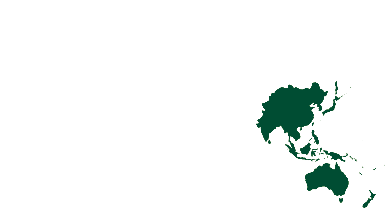
Recovering of
Compost
Waste Streams
Organic solid waste
Year | Organization
2024 | Waste Concern; World Wide Recycling (WWR)
Learn more
This case study is extracted from the publication linked below: "Sustainable Financing and Policy Models for Municipal Composting. World Bank (2016)"
https://openknowledge.worldbank.org/entities/publication/e1aac77a-5258-5927-9268-847c754cb9f5
Case study Promoting Organic Agriculture in Brazil
Ecocitrus, an organic citrus farmers’ cooperative in Montenegro, Brazil, integrates waste management and organic agriculture. Using a composting and biogas facility, the cooperative processes agro-industrial and organic waste into compost, biofertilizers, and biogas for use in farming and energy generation. Ecocitrus supports sustainable agriculture by offering cost-effective, high-quality compost products to its members and commercial markets, contributing to Brazil’s growing organic agriculture sector.


Recovering of
Compost Biogas
Waste Streams
Organic solid waste
Year | Organization
2024 | Ecocitrus
Learn more
This case study is extracted from the publication linked below: "Sustainable Financing and Policy Models for Municipal Composting. World Bank (2016)"
https://openknowledge.worldbank.org/entities/publication/e1aac77a-5258-5927-9268-847c754cb9f5
Bangalore employs two complementary approaches to municipal solid waste (MSW) composting: a long-standing state-owned model by the Karnataka Compost Development Corporation (KCDC) and a scalable private-sector solution by Terra Firma Biotechnologies. KCDC focuses on low-tech windrow composting, while Terra Firma operates a more diversified integrated solid waste management system, processing recyclables, organics, and landfill-bound residuals. Both models address Bangalore’s MSW challenges, showcasing complementary roles for public and private sector involvement in sustainable waste management.


Recovering of
Compost
Waste Streams
Organic solid waste
Year | Organization
2024 | Karnataka Compost Development Corporation (KCDC); Terra Firma Biotechnologies
Learn more
This case study is extracted from the publication linked below: "Sustainable Financing and Policy Models for Municipal Composting. World Bank (2016)"
https://openknowledge.worldbank.org/entities/publication/e1aac77a-5258-5927-9268-847c754cb9f5
The Pilisaru Project, launched in 2008 by the Sri Lankan government, aimed to develop municipal composting capacity across the country. With $40 million in funding, the project has constructed over 115 municipal composting facilities, successfully integrating organic waste treatment into urban waste management. By providing capital grants for construction and training, the project has improved waste diversion and created nutrient-rich compost, supporting sustainable agriculture and reducing reliance on landfills.


Recovering of
Compost
Waste Streams
Organic solid waste
Year | Organization
2024 | Central Environmental Authority (CEA), Sri Lanka
Learn more
This case study is extracted from the publication linked below: "Sustainable Financing and Policy Models for Municipal Composting. World Bank (2016)"
https://openknowledge.worldbank.org/entities/publication/e1aac77a-5258-5927-9268-847c754cb9f5
SOIL (Sustainable Organic Integrated Livelihoods) is a non-profit organization in Haiti pioneering circular sanitation solutions to address the country’s severe sanitation crisis. Established in 2006, SOIL operates EkoLakay (household container-based toilets), EkoMache (public toilets), and EkoMobil (portable toilet rentals), ensuring 100% waste treatment through thermophilic composting. The initiative has provided over 19,500 people with in-home sanitation, treated 804+ metric tons of waste annually, and produced 250+ metric tons of compost for agriculture and reforestation. SOIL’s model integrates urban sanitation, resource recovery and climate resilience, and could be a replicable solution for growing urban areas where sewered sanitation systems are not a viable or affordable option.


Recovering of
Compost
Waste Streams
Faecal sludge
Year | Organization
2024 | Sustainable Organic Integrated Livelihoods (SOIL)
- Regions
- 1 Type of tool
- Resources and products recovered
- Type of waste stream
- Technologies
- Themes
- Language
Type of tool
Resources and products recovered
Type of waste stream
Technologies
Themes
Language
Regions